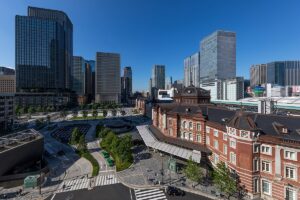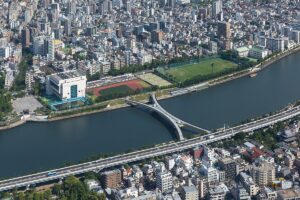Iwami Ginzan Silver Mine (Oda City, Shimane Prefecture) — Overview (History, Features, and Attractions)
Iwami Ginzan is one of Japan's most famous silver mine ruins, located in Oda City, Shimane Prefecture, and was registered as a UNESCO World Heritage Site in 2007. Discovered in the early 16th century, production increased dramatically from the Sengoku period through the Edo period. It is a historic asset that had a major impact on domestic and international distribution and contributed to the establishment of Japan's early modern economy. The landscape created by nature and human activity, including mining tunnels (mabu), the remains of a refinery, and the townscape of the Omori district, which developed as a post town, still remains in good condition. A major attraction is the opportunity to experience the quiet mountain scenery, Edo-period townscape, and the atmosphere of the mine tunnels all at the same time.
Highlights
- Omori Townscape: A preserved district where merchant houses, samurai residences, and cobblestone streets from the Edo to Meiji periods remain. While strolling, you can get a feel for the lifestyle and structure of the town at that time.
- Ryugenji Mabu: A typical tunnel that is open to the public. The inside is cool, and you can experience the mining process and the tunnel structure.
- Iwami Ginzan World Heritage Center: A facility that uses excavated artifacts, panels, and videos to clearly introduce the history, technology, and global significance of the silver mine. Recommended for first-time visitors.
- Remains of a refinery (remains of a refinery): Traces of fire-based refining and historical sites are scattered throughout the area, making it an important site from an industrial archaeological perspective.
- Former Daikansho Site and Museum: A place where you can see the shogunate's branch offices and related materials. You can learn about the connection between government administration and mine management.
- Nature Walk Route: There are mountain walking trails and observation points, allowing you to enjoy the rural mountain scenery and historical sites together.
Access (nearest station, transportation, etc.)
public transport:
- Nearest train station: Oda City Station on the JR Sanin Main Line.
- From the station to the Omori area: Take the Iwami Kotsu bus (bound for Omori/Yunotsu) from Oda City Station for approximately 30-40 minutes (please check the timetable in advance as there are limited buses).
- If you are taking a local bus, the main stops are "Omori" or the bus stop near the World Heritage Center.
Private car:
- Access the area via the Chugoku Expressway, San'in Expressway, etc. From the center of Oda City to the Omori area, it takes about 20 to 30 minutes by car (depending on road conditions).
- Parking lots are available around Omorimachi and at the World Heritage Center, but they may fill up during busy periods, so we recommend arriving early.
Note: Buses run infrequently, especially in the evening, so please check the return timetable in advance.
Estimated stay (estimated time required)
- Short tour: Focus on the World Heritage Center and Omori Townscape — approx. 2-3 hours
- A thorough tour: visit to the World Heritage Center, Ryugenji-mabu, strolling around the town, the refinery ruins, and a short trek — about half a day (4 hours)
- Complete plan: Visit the museum, several temples, historical sites, and nearby hot springs for a day or overnight stay
Nearby spots
- Yunotsu Onsen: A charming hot spring town, about 20-30 minutes by car from Iwami Ginzan. It retains the atmosphere of an old hot spring resort.
- Satoyama and observation decks around Iwami Ginzan: There are many walking routes where you can enjoy the natural scenery.
- Shimane Aquarium Aquas (Hamada City): Approximately 40-60 minutes by car. A popular aquarium with families.
- Tourist spots in Shimane Prefecture, such as Izumo Taisha Shrine and Matsue Castle, are within a 1-2 hour drive (combinations are possible depending on the plan).
Things to be aware of (crowds, manners, seasonal precautions, etc.)
- Public transportation: There are limited bus services. Please check the timetable and return bus times. It is convenient to visit by car, but please be aware that parking lots can be crowded.
- Feet and clothing: The cobblestone roads, mountain paths, and tunnels have steps, mud, and slippery areas. We recommend wearing comfortable shoes and clothing that allows you to move around easily.
- Low temperature and humidity inside the tunnel: The inside of places like Ryugenji Mabu is cool. You may feel cold if you stay there for a long time wearing only short sleeves, so it's a good idea to bring a thin jacket.
- Preservation considerations: Preserving this World Heritage Site is important. Collecting plants outside of designated areas, graffiti, loud noises, and leaving trash behind are strictly prohibited. Please follow the signs and instructions of staff.
- Busy period: Visitors increase during long holidays and tourist seasons (spring and autumn). If you want to avoid crowds, consider visiting on a weekday or early in the morning.
- Dining and Shopping: There are restaurants and souvenir shops in the Omori area, but some have limited opening hours. Be aware that many stores close late in the evening.
- Barrier-free: There are many steps and slopes when walking around the town, so it is difficult to move around with a wheelchair or stroller. Please check the barrier-free information of the facility you are planning to visit in advance.
Tip: Before you visit, be sure to check the Iwami Ginzan World Heritage Center or the Oda City Tourism website for the latest opening times, bus schedules, and event information. Take your time to savor the history and nature of Iwami Ginzan while cherishing the atmosphere of this quiet historic site.



